What Is A "nebula"?
What is a "nebula"?
A nebula is a large cloud of dust and gas that are star-forming regions. They’re formed when a star dies and its outer layers expand, creating a colourful cloud of gas. In other cases, they’re formed when a star goes supernova (when a really big and bright star dies and explodes).
There are emission nebulae, reflection nebulae and dark nebulae. Emission nebulae are close enough to a star that the gas particles absorb the UV light, get excited and emit their own light. Reflection nebulae are when a nebulae isn’t close enough to a star to absorb it’s UV light so it just reflects it. Dark nebulae aren’t close enough to a star to either absorb it’s light nor reflect it. The only way a dark nebulae is visible is if there’s a star behind it that can act as a backdrop, illuminating the back of the nebulae.
More Posts from Smartler and Others







The last, but not least of starry scholastic month!
This week’s entry: Black Holes
http://www.space.com/15421-black-holes-facts-formation-discovery-sdcmp.html
http://www.space.com/19339-black-holes-facts-explained-infographic.html
What Are the Bright Spots on Ceres?

Dwarf planet Ceres has more than 130 bright areas, and most of them are associated with impact craters. Now, Ceres has revealed some of its well-kept secrets in two new studies in the journal Nature, thanks to data from our Dawn spacecraft.
Two studies have been looking into the mystery behind these bright areas. One study identifies this bright material as a kind of salt, while the other study suggests the detection of ammonia-rich clays.
Study authors write that the bright material is consistent with a type of magnesium sulfate called hexahydrite. A different type of magnesium sulfate is familiar on Earth as Epsom salt.

Researchers, using images from Dawn’s framing camera, suggest that these salt-rich areas were left behind when water-ice sublimated in the past. Impacts from asteroids would have unearthed the mixture of ice and salt.
An image of Occator Crater (below) shows the brightest material on Ceres. Occator itself is 60 miles in diameter, and its central pit, covered by this bright material, measures about 6 miles wide. With its sharp rim and walls, it appears to be among the youngest features on the dwarf planet.

In the second nature study, members of the Dawn science team examined the composition of Ceres and found evidence for ammonia-rich clays. Why is this important?
Well, ammonia ice by itself would evaporate on Ceres today, because it is too warm. However, ammonia molecules could be stable if present in combination with other minerals. This raises the possibility that Ceres did not originate in the main asteroid belt between Mars and Jupiter, where it currently resides. But instead, might have formed in the outer solar system! Another idea is that Ceres formed close to its present position, incorporating materials that drifted in from the outer solar system, near the orbit of Neptune, where nitrogen ices are thermally stable.

As of this week, our Dawn spacecraft has reached its final orbital altitude at Ceres (about 240 miles from the surface). In mid-December, it will begin taking observations from this orbit, so be sure to check back for details!
ake sure to follow us on Tumblr for your regular dose of space: http://nasa.tumblr.com



For a moment, that black and white photo should seem like a full color image. (You have to keep both the image and your head very still).
This illusion was used in the new BBC Four series Colour: The Spectrum of Science.
It demonstrates a phenomenon called “cone fatigue.” When we stare at the purple hillside in picture above, photoreceptors in our eyes called cones are stimulated. They send a signal to our brains that says “You’re looking at something purple.” But the sensing ability of those cones decreases the longer we stare at the image - those receptors are, in a way, temporarily used up.
Then when we look at the black and white image, those same cones can’t detect any purple light. Instead they sense the color that remains: green.
LOL, this whale popped out the ocean like, “Hey, what’s up, hello?!”
P.S. those kayakers are super soaked but totally fine.

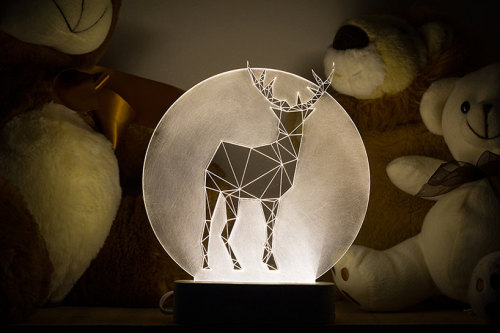
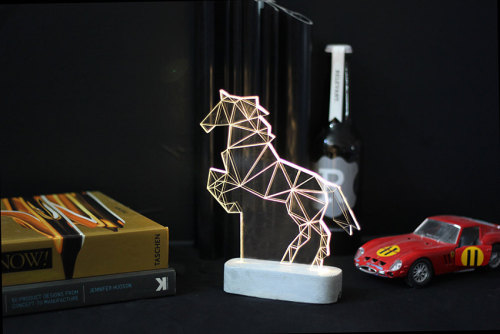
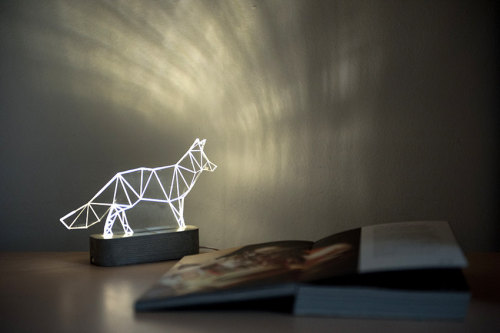
Sturlesi Design creates modern lamps that are simultaneously practical home decor and art objects. Their minimalist design reimagines animals as angular, geometric shapes, with LED lights hidden in their concrete bases. When not in use, these devices look like tiny statues—you’d never realize they’re powerful lamps. See more in the Sturlesi Design Etsy shop.





For more on the Fermi Paradox and why alien life hasn’t found us yet. (Infographic via futurism)
About your previous post, space-paintings sound awesome
You’re awesome


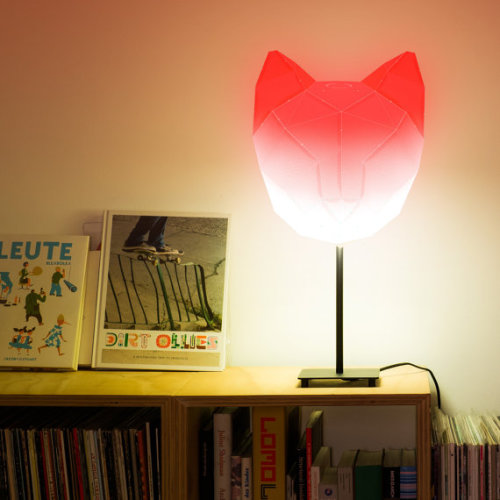

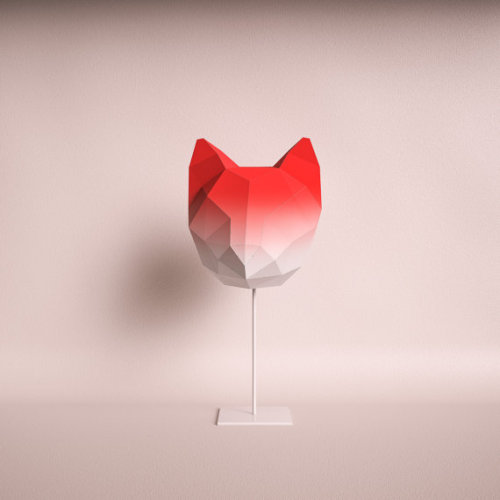
These gradient colored geometric animal cutouts by designers Maik Perfahl and Wolfgang List make great lamp shades, masks or something entirely different! Available in various fun animal shapes like cat, fox, penguin and rabbit, you can really get creative with how you choose to showcase them. Check out Most Likely Shop to see more.

My life in a picture
SCIENCE WARS – Acapella Parody (VIDEO)
Which field of science is the strongest? Physics, Chemistry, Biology or Math?
We have the disciplines battle it out in our new Star Wars inspired, acapella song.
-
 study-astronomy-biology-ref reblogged this · 9 years ago
study-astronomy-biology-ref reblogged this · 9 years ago -
 magical-poop liked this · 9 years ago
magical-poop liked this · 9 years ago -
 itimbh liked this · 9 years ago
itimbh liked this · 9 years ago -
 sincerelyanaaa reblogged this · 9 years ago
sincerelyanaaa reblogged this · 9 years ago -
 galaxygirl-jack liked this · 9 years ago
galaxygirl-jack liked this · 9 years ago -
 nich0lle liked this · 9 years ago
nich0lle liked this · 9 years ago -
 its-bob-erito liked this · 9 years ago
its-bob-erito liked this · 9 years ago -
 ri0tchick liked this · 9 years ago
ri0tchick liked this · 9 years ago -
 dan-delionss liked this · 9 years ago
dan-delionss liked this · 9 years ago -
 40chickenmcnuggets liked this · 9 years ago
40chickenmcnuggets liked this · 9 years ago -
 intergalactic-sightseer reblogged this · 9 years ago
intergalactic-sightseer reblogged this · 9 years ago -
 cloudprinxess-blog reblogged this · 9 years ago
cloudprinxess-blog reblogged this · 9 years ago -
 farmerpat420 liked this · 9 years ago
farmerpat420 liked this · 9 years ago -
 elixir-you liked this · 9 years ago
elixir-you liked this · 9 years ago -
 bubbledemon liked this · 9 years ago
bubbledemon liked this · 9 years ago -
 whitecap-bay liked this · 9 years ago
whitecap-bay liked this · 9 years ago -
 cherrryslayer reblogged this · 9 years ago
cherrryslayer reblogged this · 9 years ago -
 smartler liked this · 9 years ago
smartler liked this · 9 years ago -
 smartler reblogged this · 9 years ago
smartler reblogged this · 9 years ago -
 spacegirl1339 liked this · 9 years ago
spacegirl1339 liked this · 9 years ago -
 cadaver-excors liked this · 9 years ago
cadaver-excors liked this · 9 years ago -
 santanicopandemonio reblogged this · 9 years ago
santanicopandemonio reblogged this · 9 years ago -
 malditsky-blog liked this · 9 years ago
malditsky-blog liked this · 9 years ago -
 slytherineccentials-blog liked this · 9 years ago
slytherineccentials-blog liked this · 9 years ago -
 annoyinglypalebouquet reblogged this · 9 years ago
annoyinglypalebouquet reblogged this · 9 years ago -
 annoyinglypalebouquet liked this · 9 years ago
annoyinglypalebouquet liked this · 9 years ago -
 drawingwhatever liked this · 9 years ago
drawingwhatever liked this · 9 years ago -
 shovelthefries liked this · 9 years ago
shovelthefries liked this · 9 years ago -
 martynski reblogged this · 9 years ago
martynski reblogged this · 9 years ago -
 effiestardust liked this · 9 years ago
effiestardust liked this · 9 years ago -
 santanicopandemonio liked this · 9 years ago
santanicopandemonio liked this · 9 years ago -
 roamingspaces liked this · 9 years ago
roamingspaces liked this · 9 years ago -
 sentientuniverse reblogged this · 9 years ago
sentientuniverse reblogged this · 9 years ago